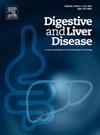Evaluation of coronary artery disease risk in liver transplant candidates using a modified CAD-LT algorithm integrated with coronary artery calcium score and coronary CT angiography
IF 3.8
3区 医学
Q1 GASTROENTEROLOGY & HEPATOLOGY
引用次数: 0
Abstract
Background
Epidemiological changes in liver transplant (LT) candidates have increased the prevalence of coronary artery disease (CAD) risk factors. The CAD-LT algorithm, validated in the U.S. to guide cardiac evaluation in LT candidates, is limited by its reliance on invasive tests such as invasive coronary angiography (ICA). In the general population, coronary artery calcium scoring (CACS) and coronary computed tomography angiography (CCTA) have demonstrated high negative predictive value for clinically significant CAD. This study evaluates a modified CAD-LT (mCAD-LT) algorithm incorporating CACS and CCTA.
Methods
This prospective, single-center study enrolled LT candidates between August 2022 and January 2025. The mCAD-LT score added obesity and metabolic dysfunction-associated steatotic liver disease (MASLD) as risk factors and redefines cardiovascular risk categories as low (<7), intermediate (7–10), and high (>10).Low-risk patients (mCAD-LT <7) with CACS <100 required no further evaluation. Patients at low risk with CACS ≥100 or those with mCAD-LT ≥7 and CACS <400 underwent CCTA. If CACS ≥400, subsequent testing was determined by the mCAD-LT score: patients at intermediate risk (mCAD-LT 7-10) underwent stress echocardiography, while those at high risk (mCAD-LT >10) were referred directly to ICA (Fig. 1).
Results
Among 205 LT candidates (mean age 59 ± 7 years; 73.6% male), MASLD and alcohol-related liver disease were the predominant etiologies. Obesity was present in 21.4% (mean BMI 26.4 ± 3.6 kg/m²), and only 14.4% had no cardiovascular risk factors. Thirty-five patients (17%) were classified as low-risk (mCAD-LT <7 and CACS <100) and did not require further testing. CCTA was performed in 126 patients who either had a low mCAD-LT score with a CACS ≥100, or an intermediate/high-risk mCAD-LT score (≥7) with a CACS <400.Among 44 intermediate/high-risk patients with CACS ≥400, 18 underwent stress echocardiography and 26 were referred directly to ICA (Fig. 1). Overall, 46 ICAs (22%) were performed, detecting significant coronary stenosis in 9 cases. Seven patients underwent percutaneous coronary intervention (PCI) with drug-eluting stents (DES); two were excluded from LT due to dual antiplatelet therapy (DAPT) contraindications. One post-LT acute myocardial infarction (<1%) occurred, successfully managed with repeat PCI.
Conclusions
The mCAD-LT algorithm significantly reduced ICA use by more than 50% compared to estimates using the original CAD-LT algorithm, while maintaining a low (<1%) incidence of post-transplant cardiac events. These results support mCAD-LT as a safe, effective, and less invasive strategy for CAD risk stratification in LT candidates.
结合冠状动脉钙评分和冠状动脉CT血管造影的改进CAD-LT算法评估肝移植候选者冠状动脉疾病风险
肝移植(LT)候选者的流行病学变化增加了冠状动脉疾病(CAD)危险因素的患病率。CAD-LT算法在美国得到验证,用于指导LT候选人的心脏评估,但它依赖于侵入性检查,如侵入性冠状动脉造影(ICA),因此受到限制。在一般人群中,冠状动脉钙评分(CACS)和冠状动脉计算机断层扫描血管造影(CCTA)对临床显著的CAD具有很高的阴性预测价值。本研究评估了一种结合CACS和CCTA的改进CAD-LT (mCAD-LT)算法。该前瞻性单中心研究于2022年8月至2025年1月招募了LT候选人。mCAD-LT评分将肥胖和代谢功能障碍相关的脂肪变性肝病(MASLD)作为危险因素,并将心血管风险类别重新定义为低(<7)、中(7 - 10)和高(>10)。低危患者(mCAD-LT <7) CACS <;100无需进一步评估。低危且CACS≥100或mCAD-LT≥7且CACS <;400的患者行CCTA。如果CACS≥400,后续检测由mCAD-LT评分决定:中等风险(mCAD-LT 7-10)的患者行应激超声心动图检查,而高风险(mCAD-LT >10)的患者直接行ICA检查(图1)。结果205例肝移植患者(平均年龄59岁 ± 7岁,男性占73.6%),主要病因为MASLD和酒精相关性肝病。21.4%的人存在肥胖(平均BMI 26.4 ± 3.6 kg/m²),只有14.4%的人没有心血管危险因素。35例(17%)患者被归为低危(mCAD-LT <;7和CACS <;100),不需要进一步检测。CCTA对126例低mCAD-LT评分(CACS≥100)或中/高风险mCAD-LT评分(≥7)(CACS <400)的患者进行。在44例CACS≥400的中/高危患者中,18例接受应激超声心动图检查,26例直接转至ICA(图1)。总的来说,46例(22%)进行了ICAs, 9例发现明显的冠状动脉狭窄。7例患者行药物洗脱支架经皮冠状动脉介入治疗(PCI);2例因双重抗血小板治疗(DAPT)禁忌症而被排除在LT外。1例肝移植后急性心肌梗死(<1%)发生,再次PCI治疗成功。与使用原始CAD-LT算法相比,mCAD-LT算法显著减少了ICA的使用50%以上,同时保持了移植后心脏事件的低发生率(<1%)。这些结果支持mCAD-LT作为一种安全、有效和侵入性较小的策略,用于LT患者的CAD风险分层。
本文章由计算机程序翻译,如有差异,请以英文原文为准。
求助全文
约1分钟内获得全文
求助全文
来源期刊

Digestive and Liver Disease
医学-胃肠肝病学
CiteScore
6.10
自引率
2.20%
发文量
632
审稿时长
19 days
期刊介绍:
Digestive and Liver Disease is an international journal of Gastroenterology and Hepatology. It is the official journal of Italian Association for the Study of the Liver (AISF); Italian Association for the Study of the Pancreas (AISP); Italian Association for Digestive Endoscopy (SIED); Italian Association for Hospital Gastroenterologists and Digestive Endoscopists (AIGO); Italian Society of Gastroenterology (SIGE); Italian Society of Pediatric Gastroenterology and Hepatology (SIGENP) and Italian Group for the Study of Inflammatory Bowel Disease (IG-IBD).
Digestive and Liver Disease publishes papers on basic and clinical research in the field of gastroenterology and hepatology.
Contributions consist of:
Original Papers
Correspondence to the Editor
Editorials, Reviews and Special Articles
Progress Reports
Image of the Month
Congress Proceedings
Symposia and Mini-symposia.
 求助内容:
求助内容: 应助结果提醒方式:
应助结果提醒方式:


